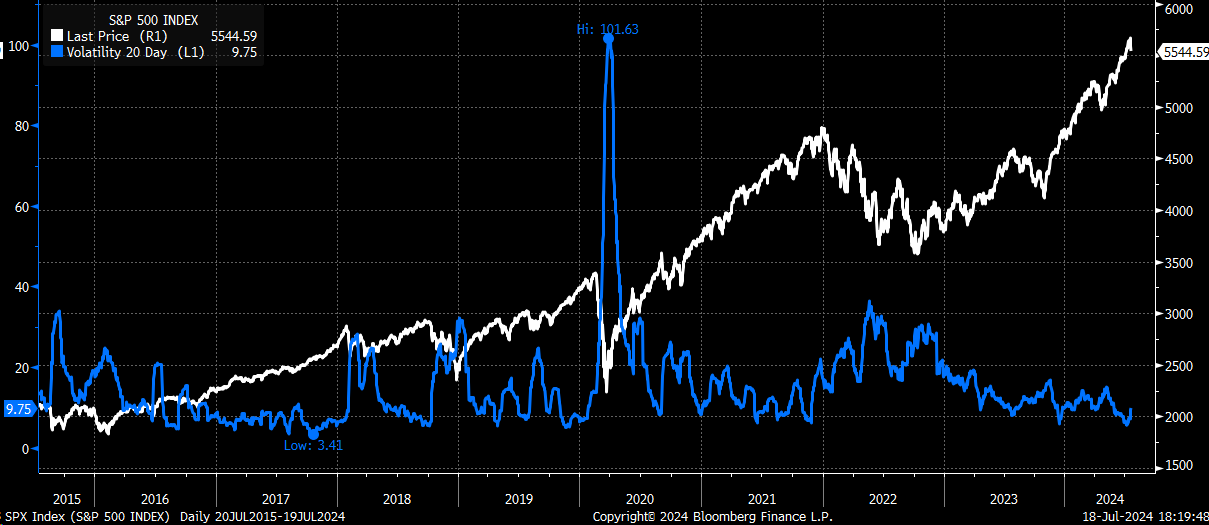The stock market fell for a second day, with the S&P 500 and NASDAQ trading lower this week. There has been a lot of freaky stuff over the past few days, and there isn’t enough time to cover it all in just one write-up. The long and short is that the market may have finally pushed itself as far as it could go.
Gamma Squeeze in Small Caps, Reginal Banks Fizzles - What's Next?
Over the past few days, we had some kind of short squeeze and gamma squeeze in the IWM, which sent the Russell 2000 and the regional banks (NYSE:KRE) sharply higher. On July 10, there was a massive spike in short sale volume in the IWM, which continued through the day before yesterday.
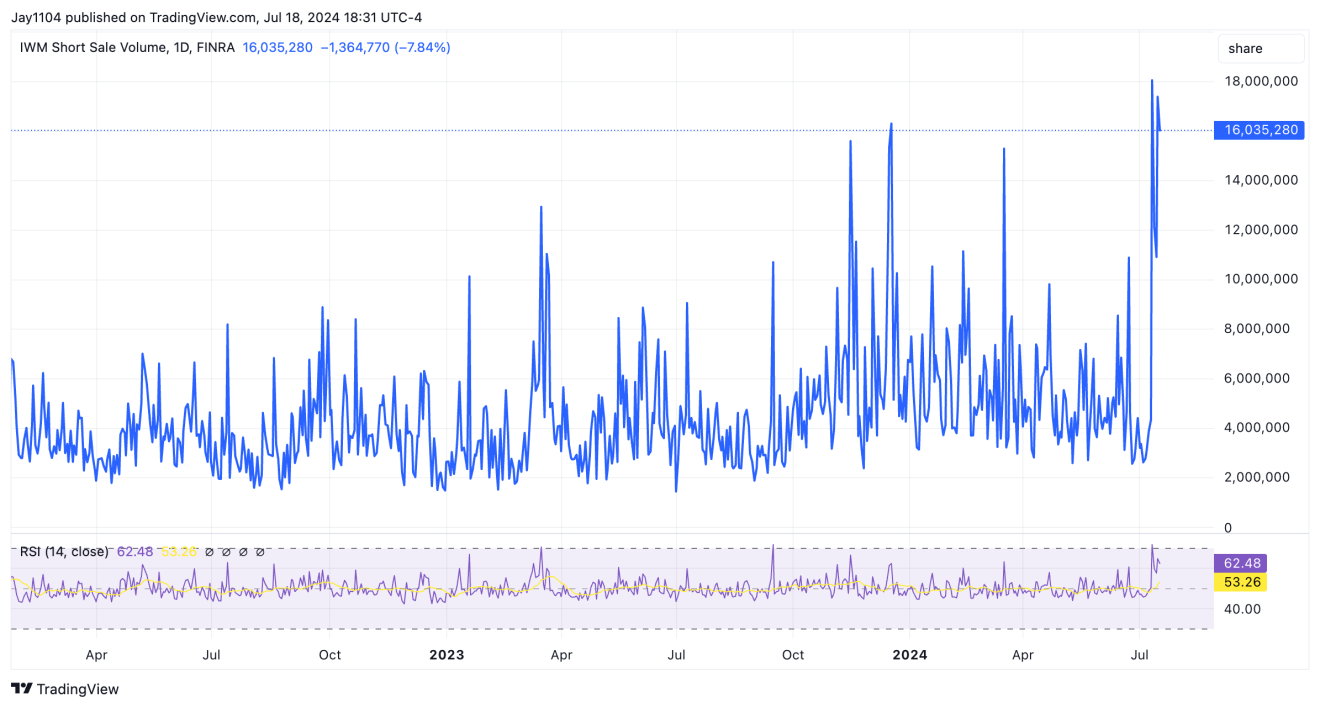
This was accompanied by a massive call volume trading in the IWM, rising implied volatility, and a rising IWM price—the classic markers of a gamma squeeze. I couldn’t even imagine what this was about or how it manifested. But clearly, it was epic, and given that IWM is an ETF and a basket of stocks, it created a lot of lopsided volumes to the upside.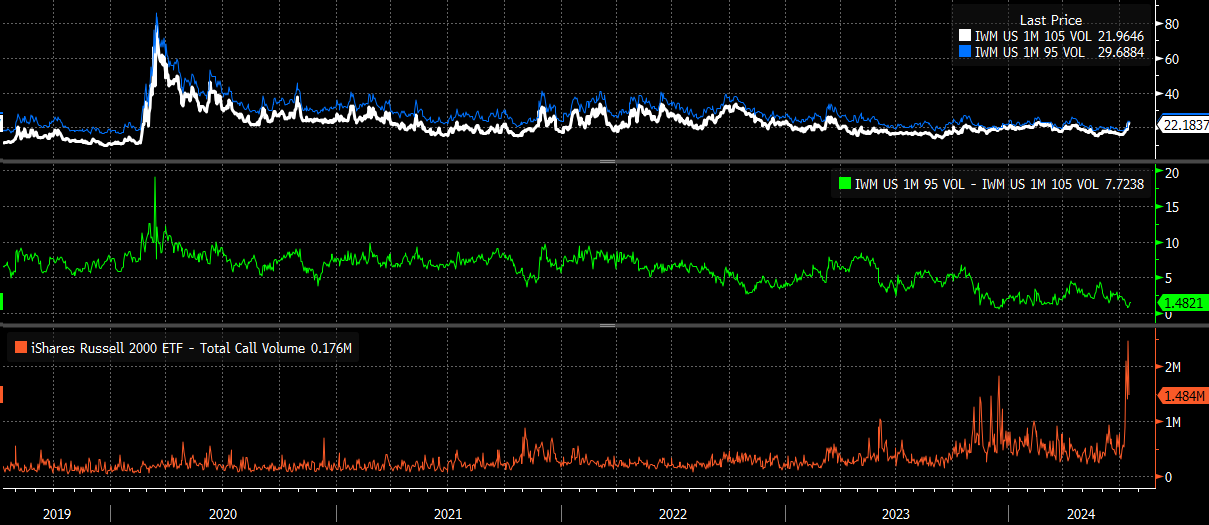
I guess that, like any gamma squeeze, it has fizzled itself out already, with the call volume starting to come down and implied volatility starting to rise for the downside and fall on the upside. This is probably why the IWM fell by almost 2% yesterday.
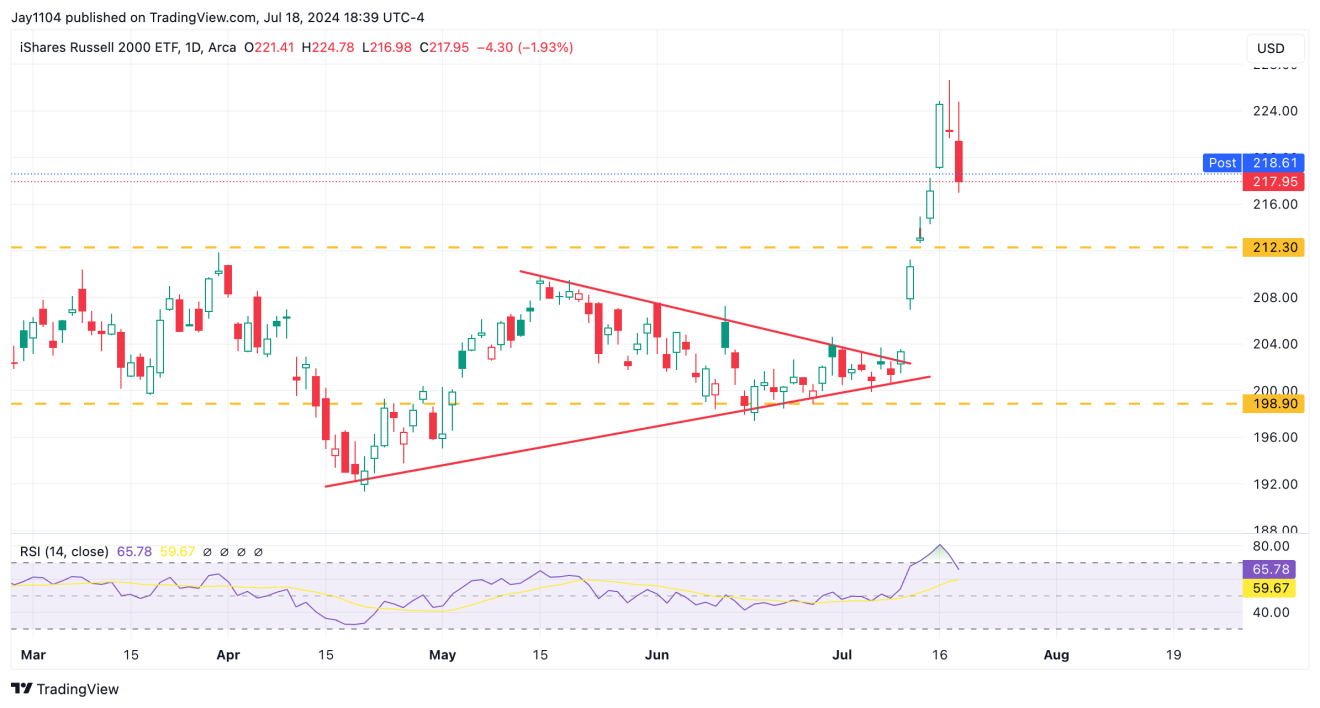
As I said at the beginning, the market has simply pushed itself to a point where it finally broke. Can it repair itself? Sure. Will it repair itself? I’m not so sure. After a period of such low volatility, I would expect there to be a period of heightened volatility, and I would expect many of these market imbalances we have seen to start coming back into place. But we will see; this market has proven me wrong plenty of times since October 2023.
The Correlation Index Remains at Lower Levels
The recent action in the stock market simply comes down to the fact that the dispersion across indexes and single stocks was at historic, beyond historic levels when the 1-month implied correlation closed last Friday below 3, at 2.93. Not only the lowest level in the history of the index going back to 2006 but the lowest level by nearly four handles, with the previous closing low in October 2017 at 6.78 and January 2018 at 6.81. This suggests that stocks are trading without any form of correlation. Even at its current 8.47, it is still ridiculously low.
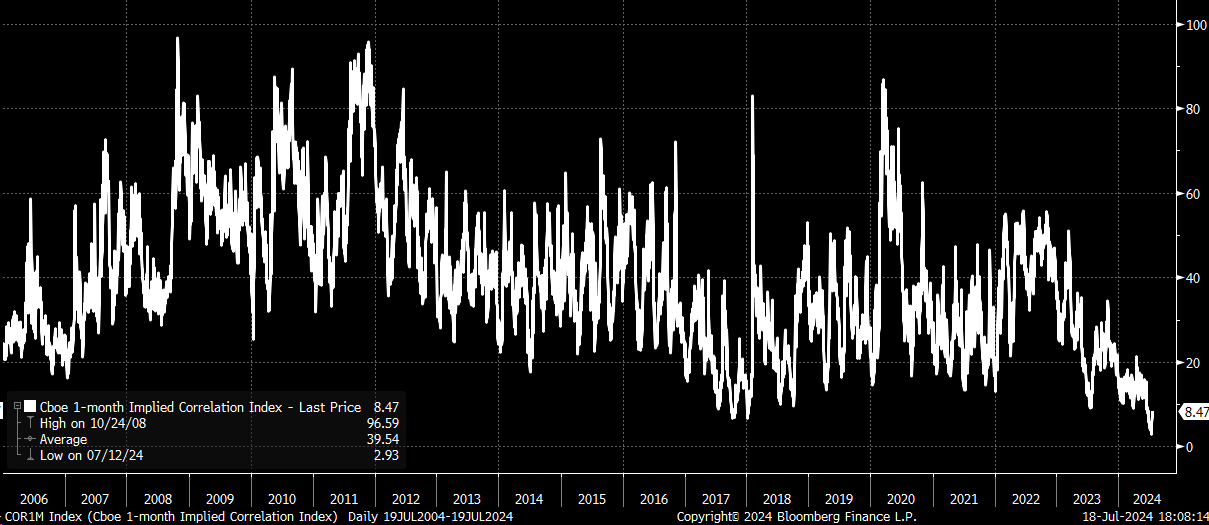
Meanwhile, 20-day realized volatility was scrapping the bottom of the barrel, and unless the S&P 500 was going to rise by less than 35 bps daily, no way realized volatility couldn’t start pushing higher. So with the 1% rally on July 10, followed by the 90 bps decline on July 11, the 55 bps on July 12, and the 64 bps rise on July 16, by the time July 17 came, we saw realized vol had moved up from 5.67 on July 9 to 7.2 by the end of day July 16, which started to push up implied volatility.
